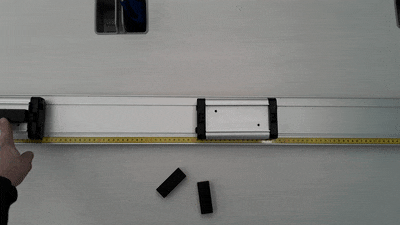Elastic Collisions
Objectives
- Track the motion of two objects of equal mass that collide elastically.
- Show that the total momentum of the two carts before and after colliding is conserved.
- Measure the kinetic energy before and after the collision and show that it is also conserved.
- Show the same is true for two objects of different mass.
Resources
- Flat track
- Carts with magnetic bumpers
- Mass blocks for carts
- Digital scale
- Digital camera or phone
- Tracker motion capture software
Background
Linear momentum is the product of the mass and velocity of an object. Linear momentum is also a conserved quantity, meaning that if a closed system is not affected by external forces, its total linear momentum cannot change.
If kinetic energy is conserved in a collision between objects, the collision is described as elastic. This happens when the forces between the colliding objects are conservative, such as springs for example.
Method
Place two carts on the track. Point the ends with magnets toward each other. Collide two carts on the track as shown above. Record a video of the motion and determine the initial and final velocities of both carts using Tracker.
Analysis Questions
- What type of forces do the carts exert on each other during the collision? Are they conservative or nonconservative, and how do you know?
- Are the mometum and kinetic energy conserved in both collisions above? Explain any sources of discrepancy.
